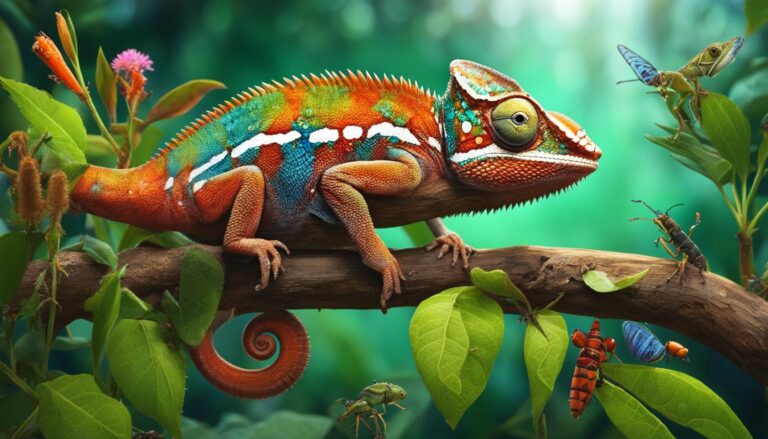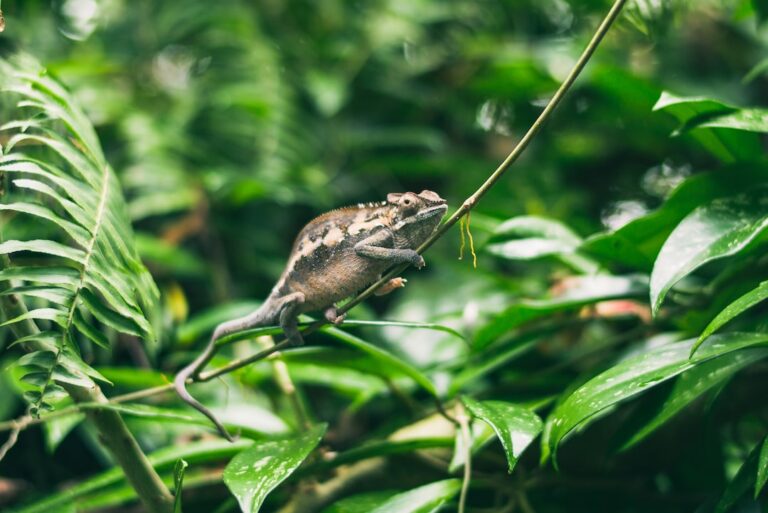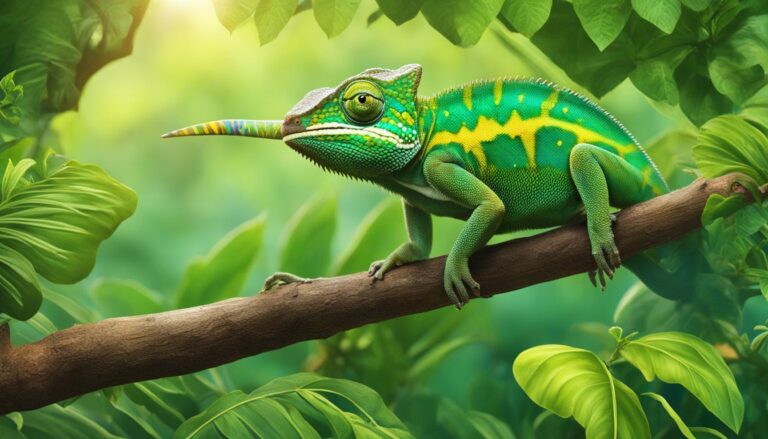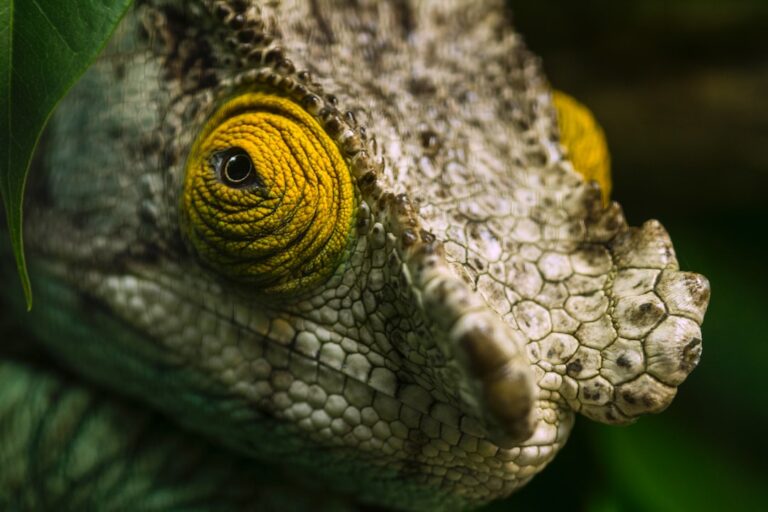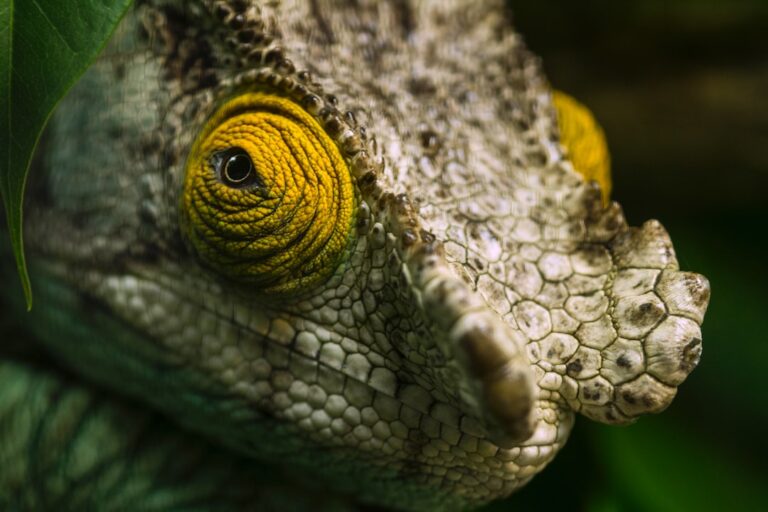Can Chameleons Smell Things?
Chameleons are fascinating creatures that have captivated the imagination of people for centuries. With their ability to change colors and their unique physical characteristics, they are truly one of nature’s wonders. Found primarily in Africa, Madagascar, and parts of Asia, chameleons are known for their ability to blend into their surroundings and their long, sticky tongues that they use to catch prey.
Table of Contents
How do chameleons perceive their environment?
One of the most intriguing aspects of chameleons is their vision. Unlike humans, who have binocular vision and see in full color, chameleons have monocular vision and can see in both color and black and white. This means that each eye can move independently of the other, allowing them to have a 360-degree field of vision. This unique ability allows chameleons to spot prey or predators from almost any angle.
The anatomy of a chameleon’s nose
The nose of a chameleon is quite different from that of a human. Instead of having external nostrils like we do, chameleons have internal nostrils located at the end of their snout. These internal nostrils are covered by a flap of skin called the nasal valve, which helps regulate airflow into the nasal cavity. Inside the nasal cavity, there are specialized cells called olfactory receptors that are responsible for detecting odors.
The role of the vomeronasal organ in chameleon olfaction
In addition to the olfactory receptors in the nasal cavity, chameleons also have a specialized organ called the vomeronasal organ (VNO) that plays a crucial role in their sense of smell. The VNO is located in the roof of the mouth and is connected to the nasal cavity by a duct. It is responsible for detecting pheromones, which are chemical signals that animals use to communicate with each other. The VNO is particularly important for chameleons when it comes to finding mates and marking their territory.
Can chameleons detect odors in the air?
While chameleons have a well-developed sense of smell, their ability to detect odors in the air is not as strong as some other animals. This is because they primarily rely on their vision to locate prey and predators. However, they can still detect certain airborne odors, especially those that are strong or close by. Their olfactory receptors in the nasal cavity are sensitive to a wide range of odors, allowing them to pick up on scents that may be important for survival.
Chameleons and their sense of taste
Chameleons also have a sense of taste, although it is not as well-developed as their sense of smell. They have taste buds located on their tongues and in their mouths, which allow them to detect different flavors. This sense of taste is particularly important when it comes to identifying potential food sources. Chameleons are known to be selective eaters and will often reject food that does not meet their taste preferences.
The influence of temperature and humidity on chameleon olfaction
Temperature and humidity play a significant role in chameleon olfaction. Chameleons are ectothermic animals, which means that their body temperature is regulated by the environment. When the temperature is too low, their metabolic rate decreases, including their olfactory abilities. Similarly, high humidity can affect the functioning of their olfactory receptors, making it more difficult for them to detect odors in the air.
How chameleons use their sense of smell to find prey
Chameleons primarily use their sense of smell to locate prey. They have been observed using their tongues to flick the air, picking up on scents that may indicate the presence of food. Once they have detected a potential meal, they will use their excellent vision to locate it and then use their long, sticky tongues to catch it. This combination of olfaction and vision allows chameleons to be highly effective hunters.
The impact of habitat destruction on chameleon olfactory abilities
Habitat destruction is a significant threat to chameleons and their olfactory abilities. As their natural habitats are destroyed or fragmented, chameleons are forced to adapt to new environments that may not be suitable for their survival. This can lead to a decline in their population numbers and a decrease in their ability to use their olfactory abilities effectively. Conservation efforts are crucial in protecting chameleon habitats and ensuring the survival of these unique creatures.
The fascinating olfactory world of chameleons
In conclusion, chameleons are truly remarkable creatures with a unique set of characteristics. Their ability to change colors, their monocular vision, and their well-developed sense of smell all contribute to their success as predators in their natural habitats. Understanding how chameleons perceive their environment and how they use their olfactory abilities can help us appreciate the complexity of the natural world and the importance of conservation efforts to protect these incredible creatures and their habitats.
If you’re curious about the intelligence of chameleons, you might also be interested in learning more about whether chameleons can smell things. Check out this fascinating article on Reptile Friend that explores the olfactory abilities of these unique reptiles. Discover how chameleons use their sense of smell to navigate their environment and locate prey. Read more here.


